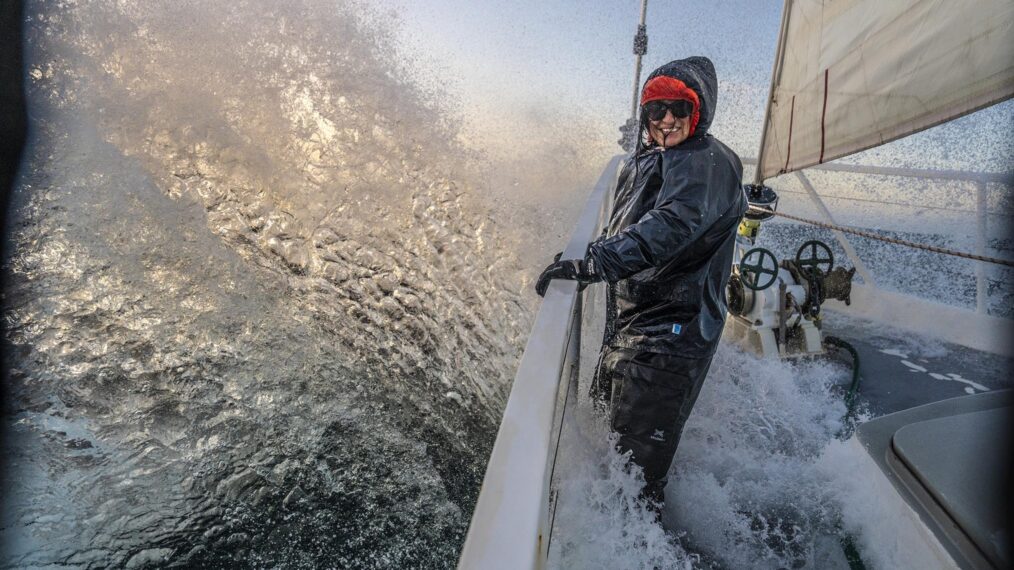A group of scientists and their climbing guides make a slow, perilous ascent of an icy active volcano on subantarctic Saunders Island in the South Atlantic Ocean. With visibility near zero and 60 mph winds, they struggle to avoid potentially fatal crevasses. They’re the heroes of the National Geographic documentary special Explorer: Lake of Fire, premiering October 26. The goal: to be the first expedition to summit Mount Michael and confirm the existence of a rare lava lake.
Yes, it’s exactly what it sounds like. Underground molten rock, or magma—which typically cools quickly and solidifies when it comes to the Earth’s surface—instead remains liquid at a balmy 2,000 degrees, perpetually releasing gases. If a lava lake exists, Mount Michael would be only the eighth of 1,500 potentially active volcanoes known to contain the rarity. And that number isn’t fixed, notes British volcanologist Dr. Emma Nicholson, head of the international team. “Lava lakes can drain and disappear quite suddenly.”
According to Nicholson, lava lakes are an important natural “laboratory.” She explains: “We can see volcanic processes happening right in front of us, instead of being hidden deep underground. And [we can] observe—with a drone—how the magma is behaving and learn to interpret signals that forecast potential eruptions.”
This was Nicholson’s second attempt to reach the lake, after severe storms cut short her 2020 effort. The 2022 undertaking began with a stomach-lurching voyage (left: lead climber Carla Pérez aboard the Australis), and conditions on the wind-battered island were no more forgiving. The cold attacked computers and batteries, and keeping body and equipment dry was a challenge. Even the triumph of reaching the crater rim was fraught.
“It was incredibly difficult to work out where we were, or where to go next, so we had to huddle in place, keeping warm until the winds calmed,” Nicholson recalls.
Still, the team managed to get samples of snow and glacial water (to study how volcanic emissions negatively affect the environment), as well as volcanic gases (to learn more about lava lakes and volcanoes in general). “Our efforts can lead to real change in how we monitor and manage volcanic risk,” the scientist says.
Since a tenth of the world’s population lives within range of an active volcano, that would be good news indeed.
Explorer: Lake of Fire, Documentary Premiere, Thursday, October 26, 10/9c, National Geographic
This story originally appeared on TV Insider

